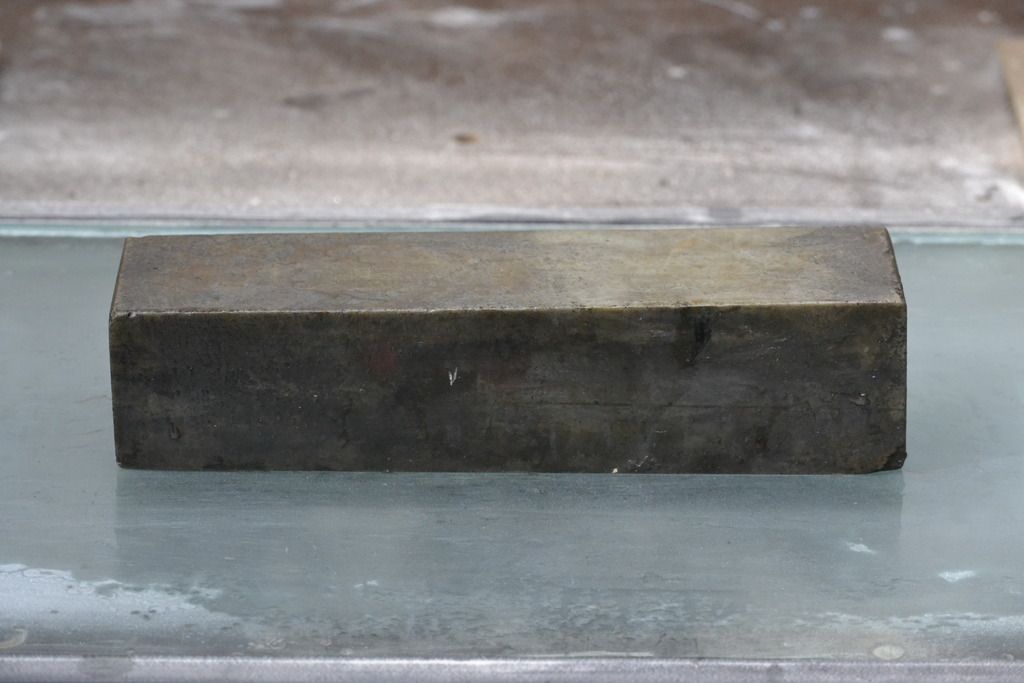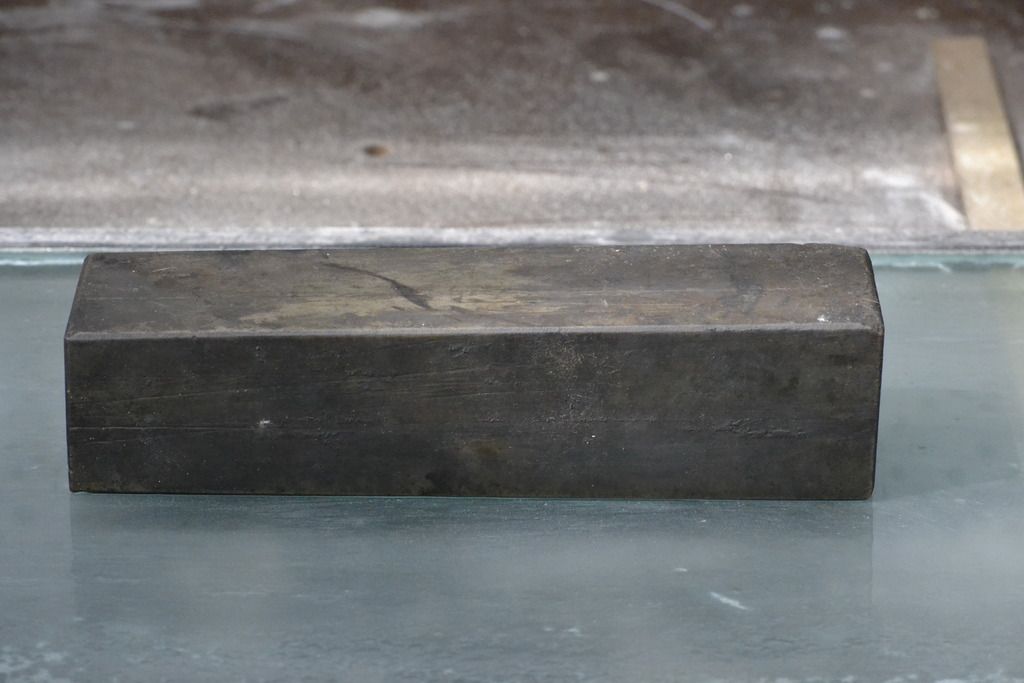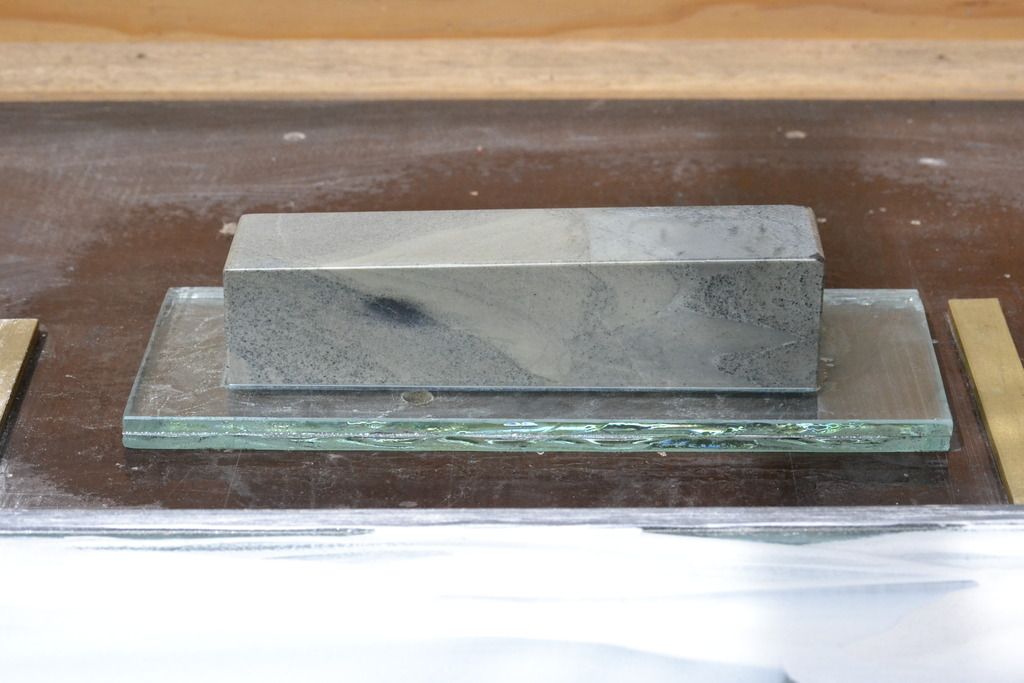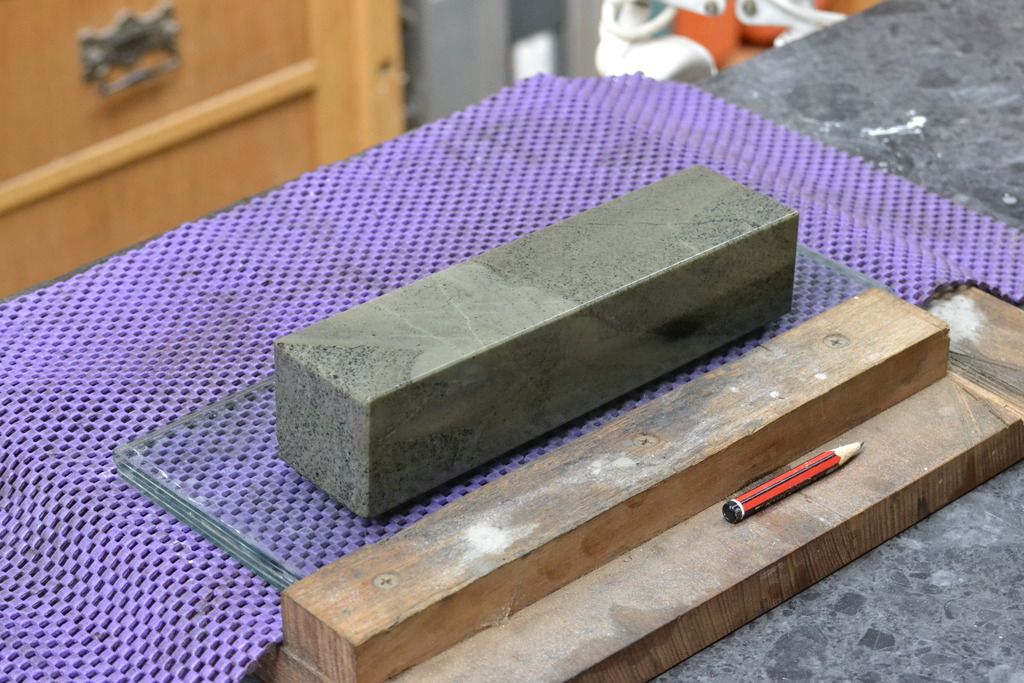swagman
Established Member
I received this 2nd hand Natural Sharpening Stone from the U.K. today. As you will see, the stone was covered in a fair bit of grime and oil build up from previous years of use. The stone measures 8" x 2" tapered in thickness from 1 7/8" - 1 5/8".
The stone as received.


After the stone after being flattened on all sides and both ends using 220 sic powder over a float glass.

Stone after final flattening on float glass with 320 & 400 grit w & d, followed by a wipe over with honing oil.

Stewie;
The stone as received.


After the stone after being flattened on all sides and both ends using 220 sic powder over a float glass.

Stone after final flattening on float glass with 320 & 400 grit w & d, followed by a wipe over with honing oil.

Stewie;




